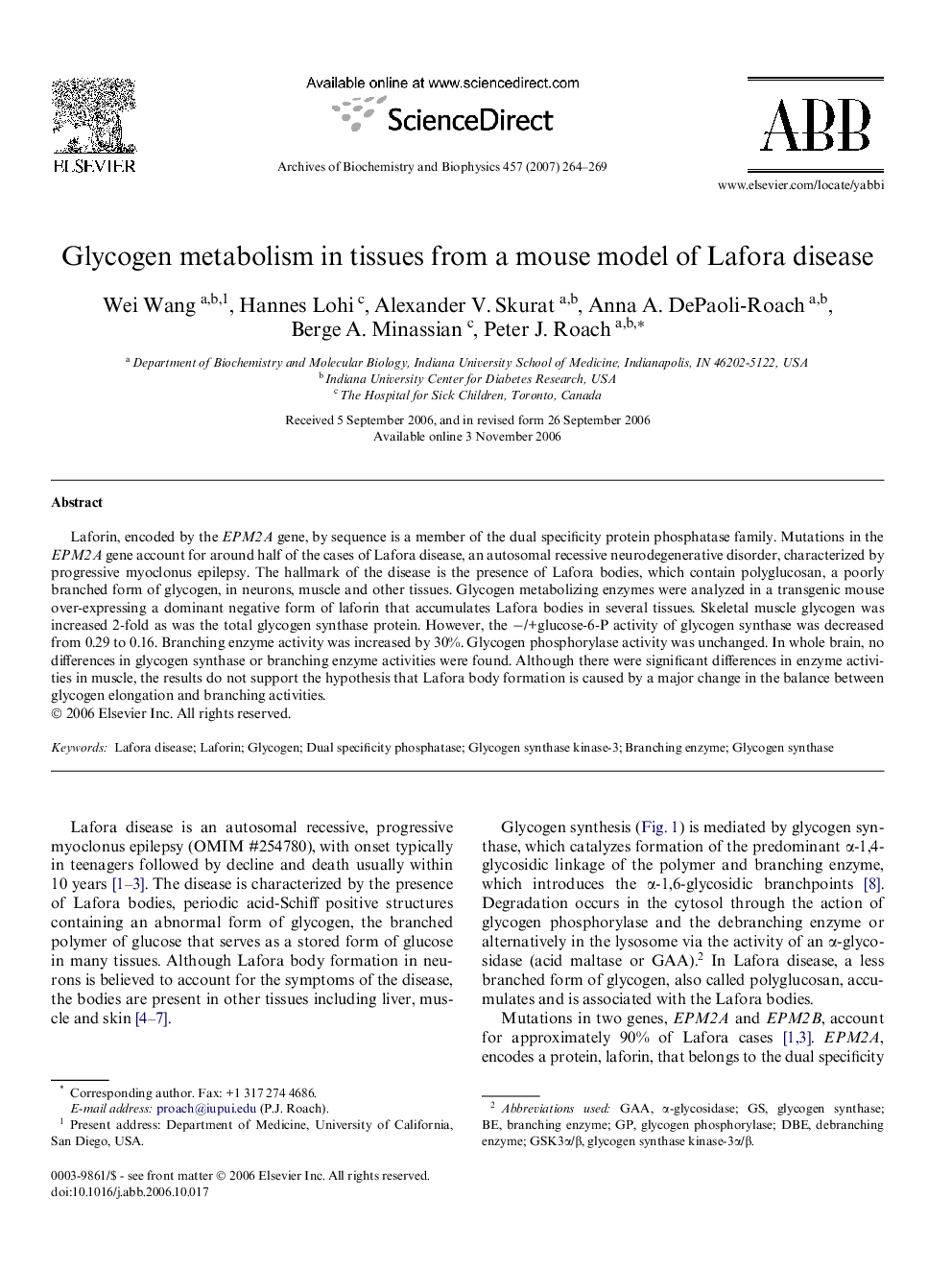| Article ID | Journal | Published Year | Pages | File Type |
|---|---|---|---|---|
| 1927425 | Archives of Biochemistry and Biophysics | 2007 | 6 Pages |
Abstract
Laforin, encoded by the EPM2A gene, by sequence is a member of the dual specificity protein phosphatase family. Mutations in the EPM2A gene account for around half of the cases of Lafora disease, an autosomal recessive neurodegenerative disorder, characterized by progressive myoclonus epilepsy. The hallmark of the disease is the presence of Lafora bodies, which contain polyglucosan, a poorly branched form of glycogen, in neurons, muscle and other tissues. Glycogen metabolizing enzymes were analyzed in a transgenic mouse over-expressing a dominant negative form of laforin that accumulates Lafora bodies in several tissues. Skeletal muscle glycogen was increased 2-fold as was the total glycogen synthase protein. However, the â/+glucose-6-P activity of glycogen synthase was decreased from 0.29 to 0.16. Branching enzyme activity was increased by 30%. Glycogen phosphorylase activity was unchanged. In whole brain, no differences in glycogen synthase or branching enzyme activities were found. Although there were significant differences in enzyme activities in muscle, the results do not support the hypothesis that Lafora body formation is caused by a major change in the balance between glycogen elongation and branching activities.
Keywords
Related Topics
Life Sciences
Biochemistry, Genetics and Molecular Biology
Biochemistry
Authors
Wei Wang, Hannes Lohi, Alexander V. Skurat, Anna A. DePaoli-Roach, Berge A. Minassian, Peter J. Roach,
